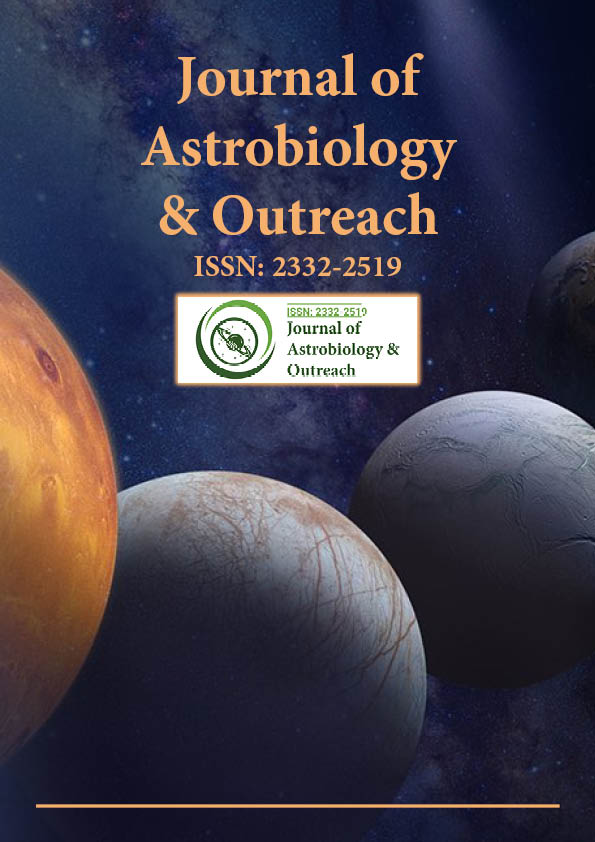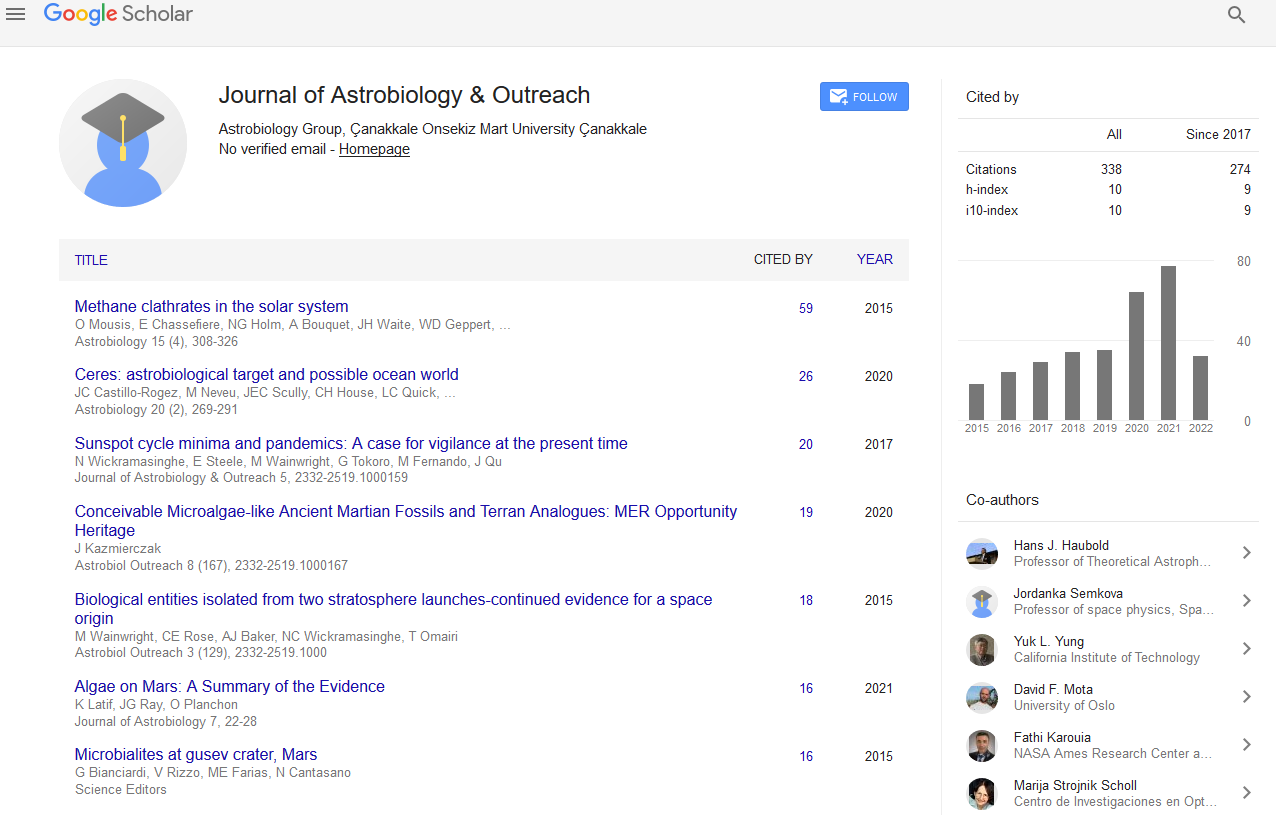Indexed In
- Open J Gate
- Academic Keys
- JournalTOCs
- RefSeek
- Hamdard University
- EBSCO A-Z
- OCLC- WorldCat
- Google Scholar
Useful Links
Share This Page
Journal Flyer

Open Access Journals
- Agri and Aquaculture
- Biochemistry
- Bioinformatics & Systems Biology
- Business & Management
- Chemistry
- Clinical Sciences
- Engineering
- Food & Nutrition
- General Science
- Genetics & Molecular Biology
- Immunology & Microbiology
- Medical Sciences
- Neuroscience & Psychology
- Nursing & Health Care
- Pharmaceutical Sciences
Wickramasinghe NC
Wickramasinghe NC
Buckingham Centre for Astrobiology and Honorary Professor,
United Kingdom
Publications
-
Review Article
Rosetta Studies of Comet 67P/Churyumov–Gerasimenko: Prospects for Establishing Cometary Biology
Author(s): Wickramasinghe NC, Wainwright M, Smith WE, Tokoro G, Al Mufti S and Wallis MKWickramasinghe NC, Wainwright M, Smith WE, Tokoro G, Al Mufti S and Wallis MK
We discuss a wide range of data emerging from the Rosetta Mission that all point indirectly to biological activity in Comet 67P/Churyumov–Gerasimenko. The existence of cracks and fissures on a smooth surface terrain apparently resealed, as well as early outgassing activity are consistent with the existence of subsurface lakes in which biological activity builds up high pressures of volatile gases that sporadically ruptures a frozen icy crust. While microorganisms probably require liquid water bodies for their early colonising of a comet, they can inhabit cracks in ice and sub-crustal snow, especially if they contain antifreeze salts and biopolymers. Some organisms metabolise at temperatures as low as 230 K, explaining the coma of Comet 97P out at 3.9AU and our prediction is that they would become increasingly active in the near-surface layers as the comet approaches its 1.3 AU p.. View More»
DOI: 10.4172/2332-2519.1000126

